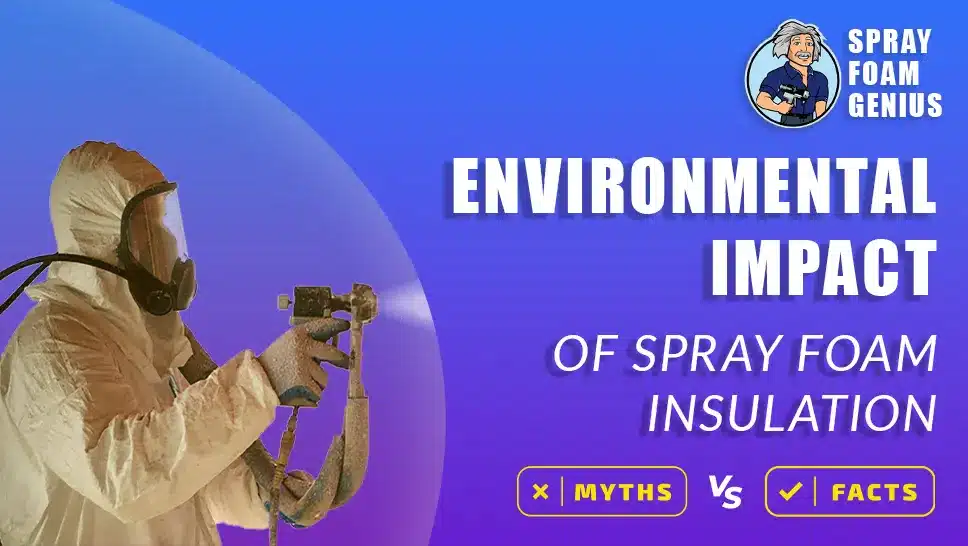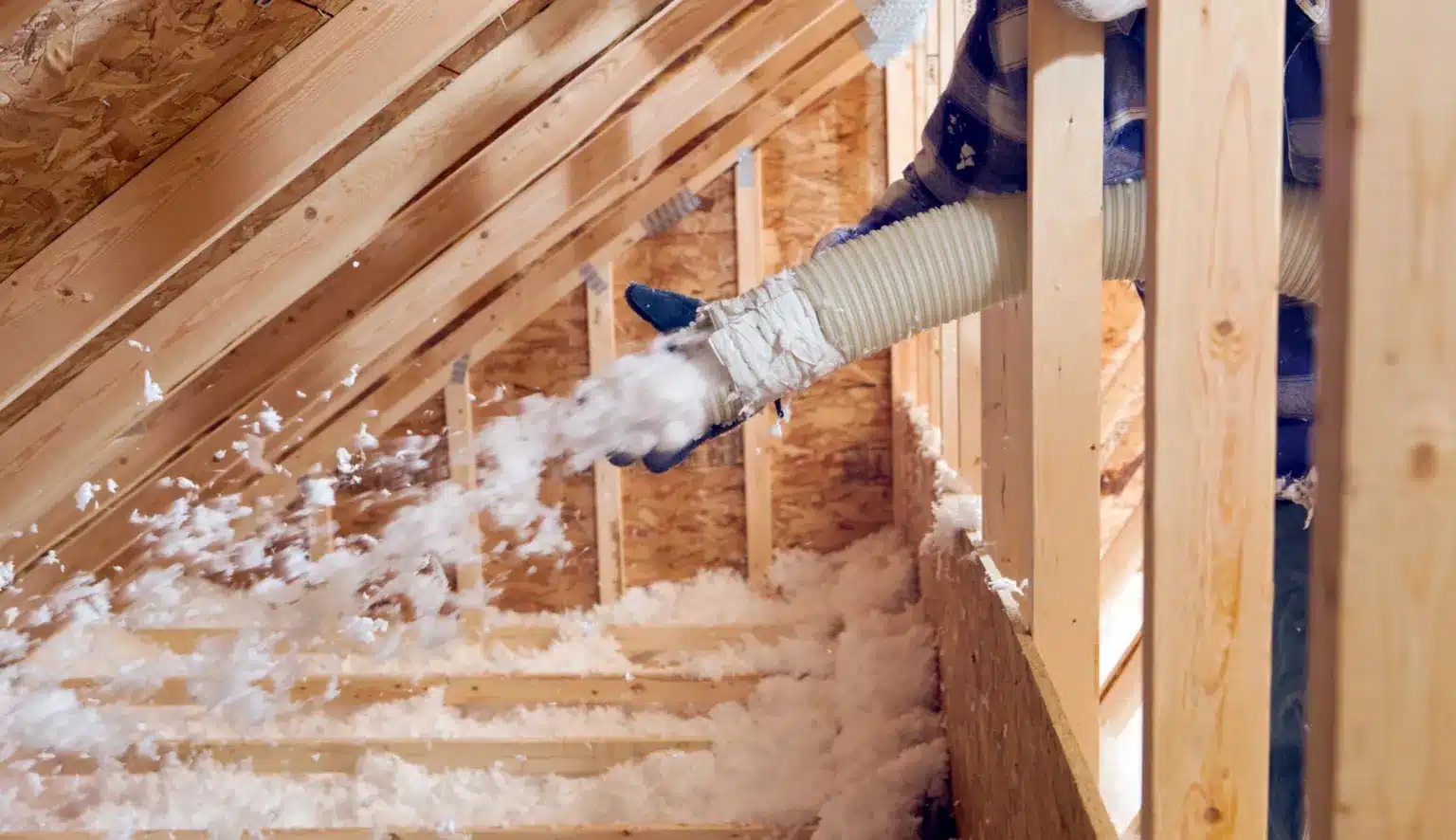
Spray foam insulation has garnered attention for its effectiveness in enhancing energy efficiency and comfort in buildings. However, it’s essential to address concerns regarding its environmental impact. In this detailed guide, we will explore common myths about spray foam insulation and present the facts, helping you make an informed decision about its use in your home or building.
Understanding Spray Foam Insulation
Spray foam insulation is a type of insulation that expands upon application, filling gaps and creating an airtight seal in walls, ceilings, and floors. It is made from a combination of chemicals that react to form a foam, which then hardens and provides excellent insulation. There are two primary types of spray foam insulation:
Open-Cell Spray Foam
- Characteristics: Open-cell spray foam is softer and more flexible. It has a lower density compared to closed-cell foam, which allows it to expand and fill gaps more effectively.
- Insulating Value: It has a lower R-value compared to closed-cell foam, making it less effective in extreme temperatures but suitable for interior applications where moisture is less of a concern.
- Applications: Ideal for use in interior spaces where flexibility and lower density are advantageous. It is often used in residential applications for its cost-effectiveness and ease of installation.
Closed-Cell Spray Foam
- Characteristics: Closed-cell spray foam is denser and more rigid. It provides a higher R-value per inch of thickness compared to open-cell foam, offering superior insulation and structural support.
- Insulating Value: It has a higher R-value, making it more effective at insulating against extreme temperatures. It also acts as a vapor barrier, helping to control moisture.
- Applications: Best suited for areas prone to moisture and for applications requiring higher insulation values, such as exterior walls, roofs, and basements.
Debunking Common Myths About Spray Foam Insulation
Myth 1: Spray Foam Insulation is Bad for the Environment
Fact: The notion that spray foam insulation is inherently harmful to the environment is outdated and inaccurate. While it’s true that early versions of spray foam insulation had higher environmental impacts, advancements in technology have significantly improved its eco-friendliness.
Environmental Considerations:
- Chemical Composition: Early spray foam products contained high levels of volatile organic compounds (VOCs), which could contribute to air pollution. However, modern spray foam products are formulated with low-VOC or VOC-free chemicals, reducing their environmental footprint.
- Energy Efficiency: One of the significant benefits of spray foam insulation is its ability to enhance energy efficiency. By providing a superior thermal barrier and reducing air leaks, spray foam helps lower the amount of energy needed to heat or cool a building. This reduction in energy consumption translates into decreased greenhouse gas emissions over the insulation’s lifespan.
- Longevity: Spray foam insulation is known for its durability and long service life. Unlike other types of insulation that may need frequent replacement, spray foam remains effective for decades. This longevity reduces the need for replacement materials and contributes to a lower overall environmental impact.
Myth 2: Spray Foam Insulation Contributes to Global Warming
Fact: Concerns about spray foam insulation contributing to global warming primarily stem from the use of certain chemicals in its production. However, significant strides have been made to address these concerns.
Key Points:
- Blowing Agents: Traditional spray foam insulation used ozone-depleting blowing agents, which contributed to global warming. Today, many manufacturers have transitioned to using more environmentally friendly blowing agents, such as water or low-global-warming-potential (GWP) chemicals, to mitigate these effects.
- Global Warming Potential (GWP): The GWP of spray foam insulation has been a focus of industry improvements. Closed-cell foams, for example, are now available with reduced GWP, aligning with global sustainability goals and reducing the overall impact on climate change.
Myth 3: Spray Foam Insulation is Not Recyclable
Fact: The belief that spray foam insulation is not recyclable is not entirely accurate. Although recycling options for spray foam have historically been limited, advancements are making recycling more feasible.
Recycling and Disposal:
- Recycling Programs: Some manufacturers and local recycling programs are now accepting spray foam insulation for recycling. These programs help reduce waste and promote the reuse of materials. It is beneficial to check with local waste management services or insulation suppliers about available recycling options in your area.
- Disposal: Proper disposal of spray foam insulation is essential to minimize environmental impact. Follow local regulations and manufacturer guidelines for disposing of spray foam insulation. Many companies offer instructions to ensure that their products are disposed of in an environmentally responsible manner.
The Environmental Benefits of Spray Foam Insulation

Enhanced Energy Efficiency
One of the most significant benefits of spray foam insulation is its contribution to energy efficiency. By forming a continuous barrier against air leaks, spray foam insulation helps maintain consistent indoor temperatures. This efficiency reduces the need for heating and cooling, leading to lower energy consumption and a decrease in greenhouse gas emissions. In fact, studies have shown that buildings insulated with spray foam can achieve substantial energy savings, making them more environmentally friendly over the long term.
Moisture Control and Health Benefits
Closed-cell spray foam insulation offers excellent moisture control, creating a seamless barrier that prevents water intrusion and mold growth. This moisture control not only protects the building structure but also improves indoor air quality. Reducing mold and mildew can lead to a healthier living environment and decrease the likelihood of respiratory issues for occupants.
Long-Term Durability
The durability of spray foam insulation means that it does not need frequent replacement. Unlike other insulation materials that may degrade or lose effectiveness over time, spray foam remains stable and effective for decades. This longevity reduces the need for additional resources and materials, contributing to a lower overall environmental footprint.
Making an Informed Decision About Spray Foam Insulation
When considering spray foam insulation, it is crucial to weigh both its environmental impacts and benefits. Here are some steps to help you make an informed decision:
- Research Manufacturers: Look for manufacturers that prioritize environmental sustainability and offer products with low-VOC or eco-friendly formulations. Companies committed to reducing their environmental impact will often have certifications or product information available.
- Evaluate Energy Savings: Consider the potential energy savings that spray foam insulation can provide. While there may be concerns about the environmental impact, the energy savings and reduced carbon footprint associated with lower energy use can outweigh these concerns.
- Consult Professionals: Work with a qualified insulation contractor who can provide expert advice on the best insulation options for your needs. A professional can help you understand the benefits and potential drawbacks of spray foam insulation and ensure that it is installed correctly and efficiently.
- Explore Alternatives: If you have reservations about spray foam insulation, consider alternative insulation materials such as cellulose or fiberglass. These materials may also offer environmental benefits and may be more suitable for your specific application.
Ready to Improve Your Building’s Insulation?
If you’re considering spray foam insulation and want to learn more about its environmental impact or need professional advice, we are here to help. Our team of experts can provide the information and support you need to make the best choice for your home or building.
Call us at 877-840-FOAM for USA and 844-741-FOAM for Canada visit our website at sprayfoamgeniusmarketing.com, or email us at [email protected] to get started.
Reach out to Spray Foam Genius Marketing to discuss your insulation needs and explore sustainable solutions for your building.
- 5 Google My Business Hacks to Double Your Leads for Spray Foam Insulation Contractors - January 14, 2025
- Why Spray Foam Contractors Cannot Ignore Reputation Management in 2025 - January 13, 2025
- Local SEO Secrets Every Spray Foam Contractor Must Know to Win in 2025 - January 13, 2025

